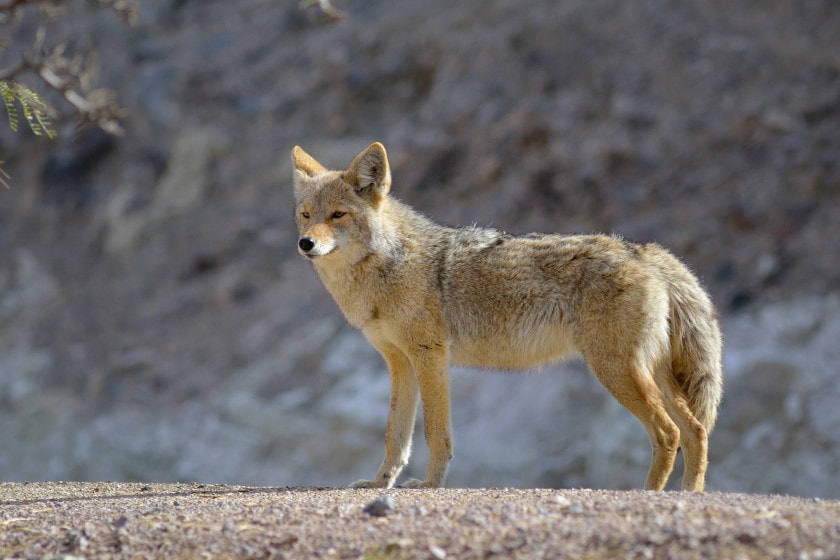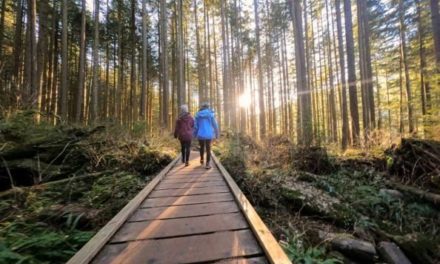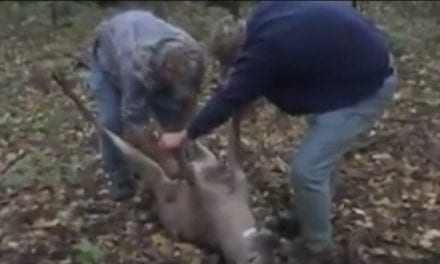
If you haven’t already seen some freshly dropped fawns this season, odds are you will soon. The young animals are at a key and vulnerable moment in early and mid-summer. In most Northern Zones, most fawns are born in late May or early June. Any later and they may not have enough time to grow and develop before winter hits. Winter can be extremely hard your deer herd and as adaptable as deer are, fawns born late are just at too much of a disadvantage.
By gathering information from your fawns, you can tell quite a bit about your deer herd. If you’ve never heard of it before, fawn recruitment is defined as the number of fawns, or baby deer, per doe that survive to six months of age, according to the QDMA, Quality Deer Management Association. This is vital information when trying to study, learn and collect information regarding your deer herd. As of 2014, only eight Midwest states participate in the study of fawn recruitment nationwide. Hopefully, each state understands the importance of this information and can move towards participating in this practice. With all that in mind, let’s look at some of the things we can learn from fawn recruitment practices. The value of knowing these things should be obvious to most seasoned deer hunters.
The Timing of the Rut

Getty Images: Tom Brakefield
This is one of the most controversial topics discussed every year. Studies has disproved the theories of the moon having any effect on the rut and we usually find the rut usually occurs around the same time annually. If that’s the case, what can newborn fawns tell us about the timing of the rut? Well, we know that a human is created after conception roughly nine-months later. Thanks to the QDMA, we know that the gestation period for a deer is anywhere between 195 and 201 days. With this information, we can find precisely when a doe was bred, indicating “Peak Rut” from the prior year.
Many of us will never witness whitetail fawns in the process of being born. However, spend enough time in the field and you should come across a fawn a time or two afield. Let’s say we find a fawn that appears to have just been born and the date is May 30. If we count back 195 and 201 days, the date of conception was Nov. 11-17. We know that “peak rut” is the time of breeding and many biologists say this behavior lasts between seven and ten days. We know that a doe is receptive for 24-48 hours to which she may be bred multiple times and even by multiple bucks. Yes, multiple bucks may breed one doe and sometimes twin fawns can even have different fathers.
As hunters, our favorite time to hunt is usually the period leading up to “peak rut.” During this time, bucks are most active, running around looking for does and trying to find the first receptive one in their area. If you know precisely when the does were bred, you can better time when to use up your valuable vacation time for the best activity.
So how do we plan accordingly and how can a fawn tell us when the rut is? If we continue with our example of finding a fawn that was born on May 30 and we know that the rut occurs right around the same time every year, this becomes quite easy. Peak rut, or the breeding period, we already gathered would be between Nov. 11-17. The chase phase, or the period leading up to the peak rut, would be the seven days preceding the breeding phase. In this situation, one can suggest that the best time to be in the stand would be Nov. 4-10. That’s not to say that hunting a few days earlier or later wouldn’t be worthy, but you would have a better chance of seeing multiple bucks moving around your area during these days. Science and math!
The Herd’s Buck-to-Doe Ratio

Getty Images: McInincoh
This concept may seem far-fetched, but it’s not entirely crazy. We know that a doe is receptive for 24-48 hours. In an ideal world a deer herd with a doe to buck ratio of one to one, we could almost guarantee that every doe would be bred their first time being receptive. In fact, a deer herd that sports such a ratio that is not entirely far off. In such a scenario, the majority of your does being bred the first time around would be much higher. When you get to numbers that are far greater apart in the ratio, that is when does can miss an opportunity to be bred and will become receptive again roughly 28 days later. So how can fawns tell us about our deer herd in this aspect?
As we mentioned, most northern zones fawns are being born in late May into early June. If a doe isn’t bred during her first cycle but bred 28 days later, her fawns will be born later as well. That means that by the end of June, if you come across a pregnant doe, there is a good chance she was not bred during her first receptive cycle. Does this necessarily mean there are far more does than bucks in your area? Not necessarily, however it might be worth considering that possibility If you continue to see more newborn fawns or pregnant does later into June, this could ultimately be an indication of an increasing doe to buck ratio.
How Many Predators Are In the Area

Getty Images: Cavan Images
As we know, harsh winters and predation are amongst the biggest causes of death to young deer. With new studies, we are finding that fawn recruitment rates have dropped close to 25 percent since the early 2000s. Areas where there are harsh winters, you will notice more adult deer mortality, extremely low young deer survival rates and a decrease in antler development. As these winters become harsher, these numbers will all begin to drop. But what about the increase of predation, especially in areas where the winters may not be harsh?
Trail cameras and lactation rates can help us determine fawn recruitment numbers and ultimately let us know if deer fawns are making it at least to their first six months of life. As predation increases, more and more fawns are being susceptible, thus ultimately decreasing your deer population. So, what factors increase or decrease predators, specifically coyotes, and what can the fawns tell us about this? Well, as we mentioned before, if your whitetail deer herd ratio is off, does may begin to drop fawns all throughout early summer. Hypothetically speaking, it would be ideal if every fawn was born at the exact same time. Why? Well, take a trip to the restaurant as a human and compare.
If you are hungry and capable of going to the restaurant every day and have a meal every day for a few months, you will consume much food over the course of those months. Hypothetically speaking, let’s say we take that exact same amount of food and place it all on a buffet and you can have your way at it. The first day you will eat until you are full and probably won’t be able to walk away from the restaurant. But you will go back the next day, grab a smaller bite to eat and continue until the food spoils. Truthfully, you really wouldn’t have much time, nor would you eat much food.
Now fawns don’t spoil, but they grow. They become educated and their survival instinct becomes better as time goes on. If every fawn was born around the exact same time, the coyotes can only handle so much. As a few weeks and months go by, the number of fawns the coyotes would ultimately take out become less and less. Now if you have an unbalanced herd and fawns are being born throughout the month, coyotes will capitalize on this and begin to thrive on the abundance of small fawns.
So, when looking into the early season and as you pull your cards from your trail cameras, see how many fawns there are with their mothers still. If you happen to shoot a doe early on, check to see if she is still producing milk. If you happen to shoot a doe that is still producing milk, there is a good chance her fawn or fawns may still be alive. If you begin to see multiple does in your area that do not have any fawns into early hunting season, there is a good chance you have a major predator problem that needs addressing.
As you go about your summer hunting chores of checking trail cameras and preparing food plots, don’t forget to look at the three points we outlined above. You might be surprised what the fawns can tell you about your deer herd.
Like what you see here? You can read more articles by Dustin Prievo here. Follow him and his hunting team, Top Pin Outdoors, on Twitter, Facebook and Instagram.
READ MORE: DEERLAB: THE TRAIL CAMERA SOFTWARE DESIGNED FOR SERIOUS DEER HUNTERS
The post 3 Facts Fawns Can Tell Us About Our Deer Herd and the Rut appeared first on Wide Open Spaces.















